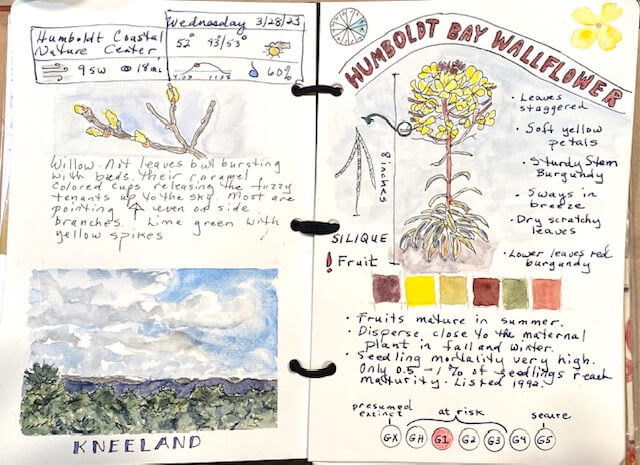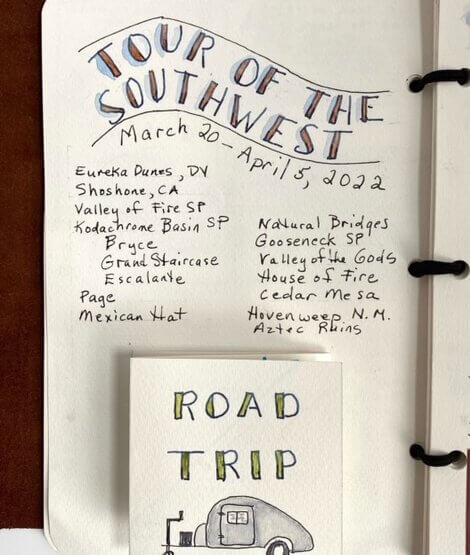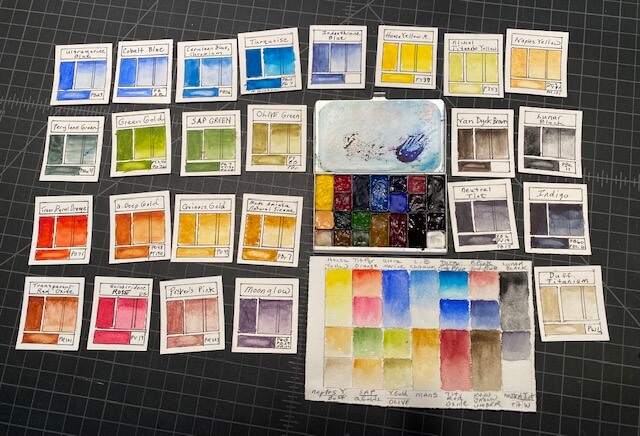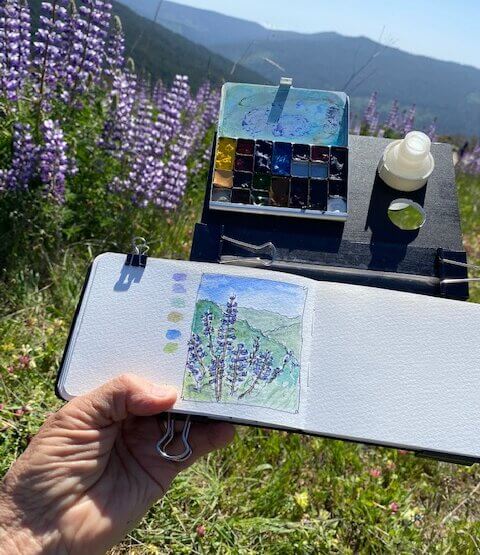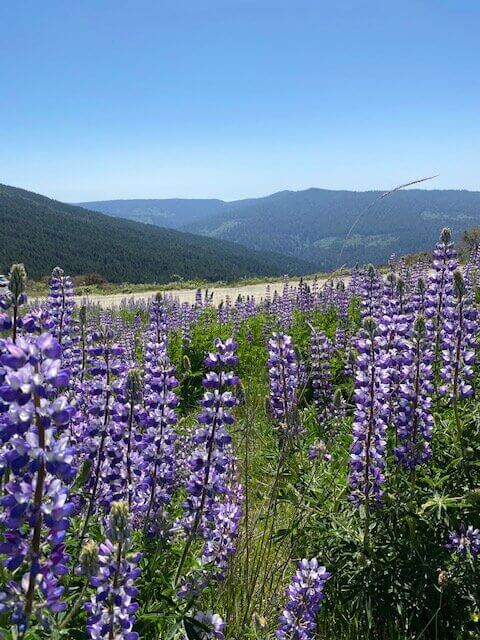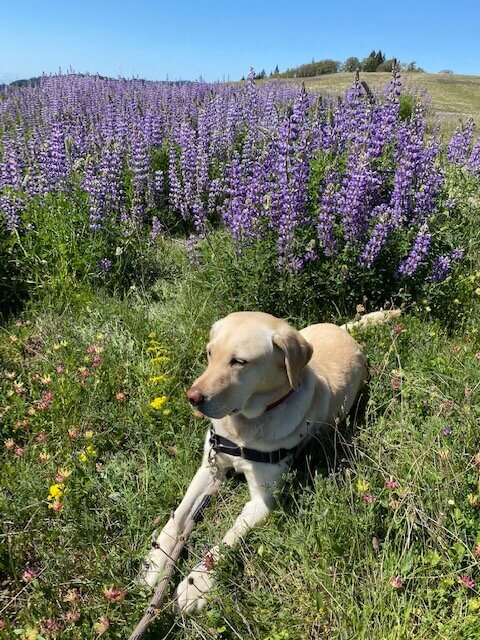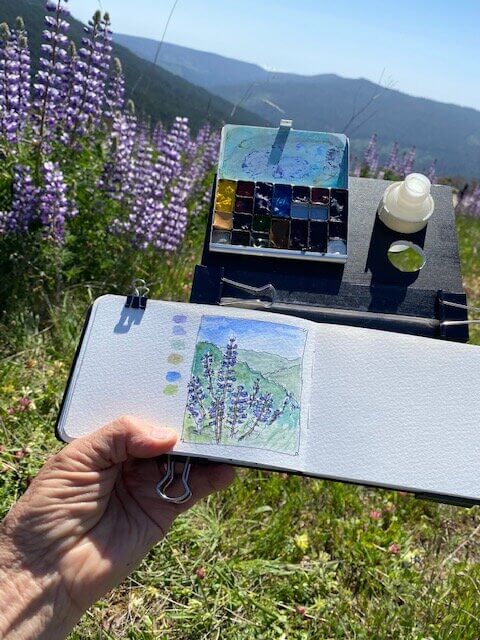As the weather warms I’m able to do more field journaling. My last two outings have been to the Humboldt Coastal Nature Center just north of Manila (Humboldt County!). I am fine tuning my “gear” so that I can hike in with a minimum of weight and still have the essentials for creating good field notes. There is nothing like recording on location; it works different parts of my brain and I “see” more than if I relied on photos.
The first outing was my first look at the endangered Humboldt Bay Wallflower. I didn’t have much time to draw the flower but I did sit down and create a color palette that I could refer to later. I was able to make a lot of observations and noted these in my journal. The willows were done on location as well as the ink outlines of the landscape. I did research back in the studio and made many discoveries about this amazing plant. It produces lots of seedlings – no problem there – but only 1% of them survive. Why? I used a scale for survival risk and included it at the bottom of the page. Somehow the image “says more” than the word “endangered”. I also like the graph in the upper left of the page a visual of when the plants are in bloom.
I had time on the second outing to create most of the journal spread shown below. My goal was to compare two similar items. I added the metadata first and wrote a bit about the walk into the dunes. I found these two shells on the beach and I have to confess I thought the larger one was a mussel. They are both clams. I used iNaturalist to identify the clams but only after I have already recorded what I saw; sometimes knowing the name for something “turns off” my curiosity sensor!
I learned a lot on these two trips:
- Watercolor and sand work just fine together
- I love my water soluble pencil – used on the clams
- I like fountain pens with thicker nibs
- I like using different colors of ink
- Waterbrushes were really easy to use in the field
- Pacific Razor clams are not mussels. Both clams are bi-valve
- I like my first “bubble” letters
- A color palette is a great addition and is a helpful reference for finishing work in the studio
- I am remembering to use my measuring tape!
- I still have more questions to answer. That’s good.
I HOPE YOU CAN VISIT: Friends of the Dunes https://www.friendsofthedunes.org/

